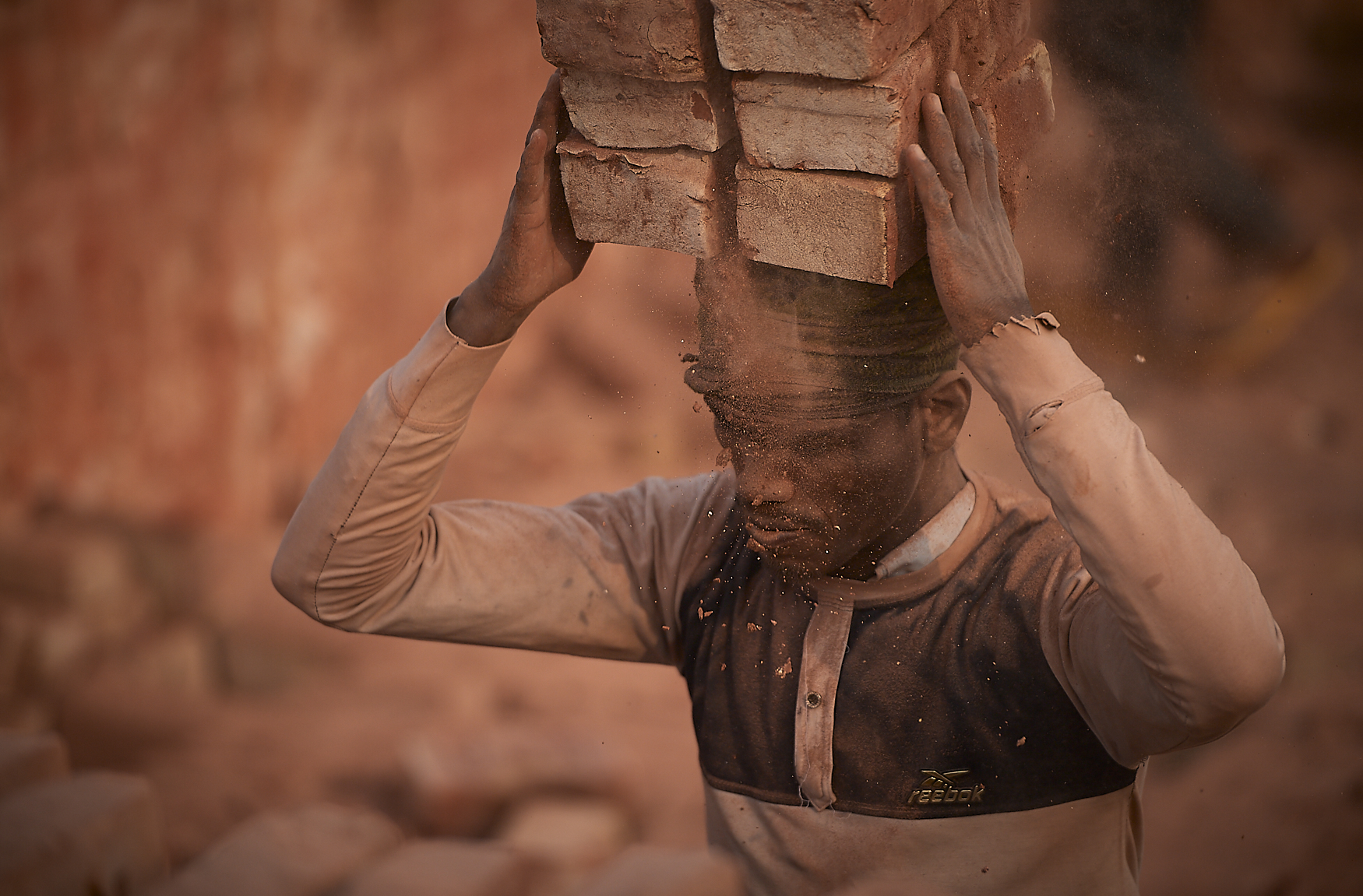the brick factories of bangladesh
Coming from a distance all you can see is a forest of smokestacks, all identical, all belching exactly the same smoke in an almost cartoon-like fashion. In many ways, this looks like a child’s idea of what a “factory” should look like but - minus the smog - but the closer you draw, one thing becomes very obvious: the reality is very, very different. The reality of the brick factories is, for lack of a better term, more real than almost everything we, westerners, have seen in our lifetimes.
Bangladesh’s brick factories is, undoubtedly, one of the absolute musts for any foreign visitor to this stunning, friendly and very different country, but you would not think that was the case if you read any of the numerous guides, tourism articles or even tour company itineraries. There are, unfortunately, two main reasons for this: first and foremost, the image of the factories is not one the government is very eager to promote. Second is the tourism Bangladesh targets which is, according to most people I spoke with, wealth, all-inclusive package-seeking, middle-aged asians. And these tourists are not really interested in seeing a factory from the 1900s. Both are wrong. The brick factories are not only visually stunning but also an amazing glimpse into a past which is both harsh and beautiful in its own unique way.
Make no mistake - life and work in the brick factories is harsh. It’s a continuous, toil from sunrise to sunset, where entire families work in conditions most of us would not even imagine, most of the time for a daily “salary” of less than what most of us pay for a Starbuck latte. You may be reading this and thinking “third world country”, “exploitation” and about a dozen other politically correct expressions but you know what? You too would be wrong. There is more camaraderie, more friendliness, more smiles and, perhaps a better actual work environment than almost any western office I have ever worked in. Nowhere have I been more certain that the families I saw working together are probably closer than any of our more modern families and the children I saw, while much dirtier, shoeless and wearing second-hand clothes, laugh more, exercise more and enjoy their lives more. This is - or at least should be - definitely foot for thought.
Brick factory workers sometime work as entire families, including men, women and children, each in distinct roles
But, let’s get back to our approach to the factory.
A Bangladesh brick factory is a sprawling area, sometimes covering as much as 3 or 4 football fields and, most of the time, is an absolute hive of activity. You see, the brick factory is designed for continuous operation with each stage of the production constantly being replenished and feeding the other, all with an impressive amount of materials and waste recycling. At any moment in time, standing atop a hill and gazing down at the factory, you will see people quickly and efficiently moving from one area to another in a strangely soothing choreographed motion, never bumping on each other, without wasteful moves. It’s hypnotic to watch from a distance but a hundred times more interesting to experience close up.
The factory is split into four main areas: the materials’ processing area, where the mud is processed and the coal ground, the brick moulding area where bricks are created and laid to dry in the sun, the kiln and, finally, the storage and offloading area. Let’s walk through them one by one and see what we can see.
The main material for bricks is the fine, peculiar grey mud which most factories gather from the shores of the nearest river which explains, to a large extend, why most factories are located either on the banks of a river or very close to it. Mud is collected and gathered in large-ish pits in the ground where, with the addition of the necessary amounts of water, sand and, sometimes, straw (but very, very little) and the stumping of countless feet over many, many hours, becomes an almost perfectly homogenous dark grey mass, not much different from the lumps of clay we sometimes see in art classes. While some factories do use these days machines to do the mixing, these machines tend to be small (and therefore can only produce a limited amount of mud at any time), old (which means they break down quite frequently) and expensive, meaning few factories can afford them. There’s another reason why you don’t see mixing machines everywhere: once the machine produces its stream of material, 3-4 people must be in attendance to constantly feed it new raw material, remove the output, clean the nozzles etc - overall a much more hurried and stressful process than the more traditional, manual one. You see, you don’t actually need a constant stream of material - you just need a pool of material you can simply draw upon as and when you need it and for that reason, the mud pits are still the better option. Strange huh?
Right next to the mud pits is usually a small hut containing coal. Coal comes in at regular intervals and it is inside this hut where it is ground into fine powder to be used in the kilns. Now, bear with me for a few minutes - the coal dust will play a very important part later on in our story.
Once the mud is ready, it is carried (usually by men) to the moulding area where, both men and women, sitting in orderly rows, churning out bricks at a rate of 4-5 a minute (think about it for a moment - they can create a fully formed brick in around 10’’ - how impressive is that?). First a handful of dry sand is thrown into a thick wooden mould with the name of the company embossed in thick brass letters inside, and then, in an almost continuous, smooth, motion, mud is added, compressed and the mould is upended with the perfectly formed brick easily falling out. At this stage the bricks are still very soft, so they are placed in very neat rows to slowly dry under the sun. There they will stay for anything between 4 and 10 days, occasionally turned around on all sides so they can dry uniformly.
And here is our first glimpse into how important - crucial actually - conservation and recycling is for less developed industries and societies: during the drying process bricks crack - be it from too much sand, too much water, hurried moulding, someone accidentally stepping on one, whatever. When this happens the workers will pick them up, break them apart and throw them back into the mud pit to be assimilated. This is done for two reasons: first, making mud is a long and laborious process, so even a humble material like this is previous and second, unacceptable bricks at this stage will not work well in the baking stage and may jeopardise all other operations. It’s recycling and conservation all in one!
By far the most important - and visually impressive - part of the factory is the kiln area. Contrary to what you may imagine, the brick kiln is not an oven - at least not in the traditional sense. It is an area roughly 20% larger than a baseball court, surrounding by a thick wall about 4-5m high and about 2m wide. Throughout this wall there are “passages” - small tunnels - for the heat and the smoke to circulate (read on, it will make sense in a minute). All these tunnels connect to each other and to the massive smokestack rising more than 25-30m in the air.
Here work happens at a much more frantic pace than in the rest of the factory - mainly because of the smaller space and the speed in which things happen: at one end, workers bring in the dry bricks, one cart-load at a time, and stack them from the floor to the top of the wall, in highly regimented patterns, specially designed to not only allow the intense heat to circulate freely but also to support the huge weight all the way to the top. No mistakes are allowed here as any weak spot will cause entire stacks to collapse while bricks stacked too closely together will result in uneven baking and tons of discarded bricks. Yet, to see the workers toss the bricks from the carts onto their colleagues’ hands and they placing them seemingly carelessly (and it does seem very random and careless - trust me, even seeing it up close, it’s very hard to identify the patterns and how they know where to leave gaps and where not!) in massive towering blocks. The workers deftly climb up and down the half-finished blocks as they place bricks up and down, without looking at their feet or where they’re stepping, continuing the work almost as if on autopilot.
Now, this piece of work is dirty and it involves loads of dust being flunk all over the place. It is also happening at breakneck pace, meaning stress, too many people in a very small, sometimes crowded, space, even waiting in line until one cart is unloaded before the next one takes its place…and yet, there are no arguments, no stress, no shouting. The workers joke and tease each other as they work, the women casually speak to their children who freely wander in and out and the intrusive photographer is not an annoyance but rather a curiosity, someone to make fun of, someone to ask questions to (usually which country you are from and what it is you’re doing there - mostly they want to know if you’re a journalist or not. The moment that is clarified, you are absolutely welcome into their “family”) and someone they literally just work around, without annoyance or anger.
As bricks are stacked, you cannot help but notice 4 or 5 workers carrying baskets with thick brick dust (usually mixed with coarse sand). They collect this from the very floor of the kiln, right next to where their colleagues are stacking the bricks and quickly carry it to the top of the stacks where they use it to completely cover the top part of the bricks with a layer about 10-15cm thick. I don’t know how many of you have quickly done the math, but it takes an enormous amount of dust and sand to cover this area and this translates to many trips. In less than 10’ I think I counted more than 5 return trips - and they include filling the baskets with sand! Those quiet, reserved people, who don’t really interact much with the others, work fast - deceptively fast!
Remember the coal dust we created earlier? Well, it is here where it comes into play - as the bricks are covered by sand and dust, the fire supervisor comes along and places metal cylinders (with a hinged opening) at regular intervals. it is through these openings that coal dust will be fed
However, it is at the other end of the kiln where things are very, very interesting. And messy. Very, very messy. It is also by far the most visually stunning and impressive part of the entire factory. There is a thick orange cloud of coarse brick dust covering that entire area and through it, silently, almost like ghosts or visions, shapes move. Looking in from the outside (because, let me tell you, it does take a bit of a decision to step into the maelstrom) you can hardly believe these shapes are human - they appear shorter than usual and their tops are really long and oddly rectangular. And then, suddenly, out of the cloud, a shape emerges and with each step it becomes a man, heavily laden with a small tower of bricks carefully balanced on his head. And still, they don’t exactly resemble men - they are covered head to toe with the brick dust, sometimes their eyes are still closed and every external wet surface seems caked with the stuff. They are almost like golems - only golems don’t smile the moment they see you. Nor do they pose for a picture or joke with their friends about the weirdo photographer among them. These wonderful people do.
You hold your breath and step into the cloud and, for a moment, you can hardly see anything. But then things clear up and you are there - in the middle of things. This is where you need to be careful where you step and you need to ensure you stay away from their path - bear in mind that while you’re there to observe, they are there to make a living. Here is where your camera works overtime - this must be one of the world’s most challenging places for any autofocus mechanism - and this is where everything is magical. The image of a man, lifting pairs of bricks with his hands and placing them, almost blindly, on top of his head while handfuls of brick dust cascades onto their face, caking their eyelids and lips is almost alien and yet, very human and very real. Let your mind wander for a moment and it’s not hard to imagine you’ve been transported through time and space to early Victorian England and the brick factories of Liverpool or Sheffield.
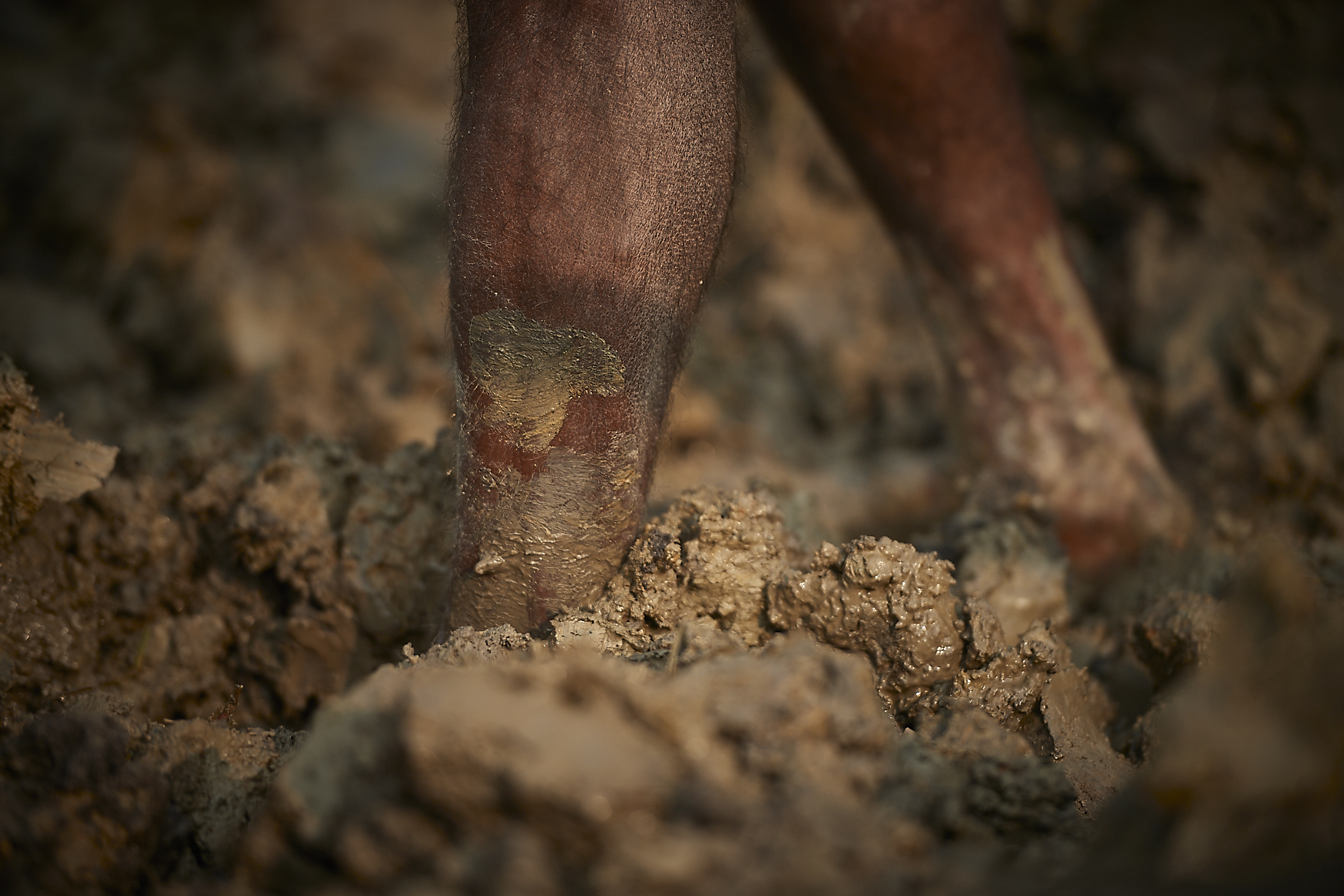
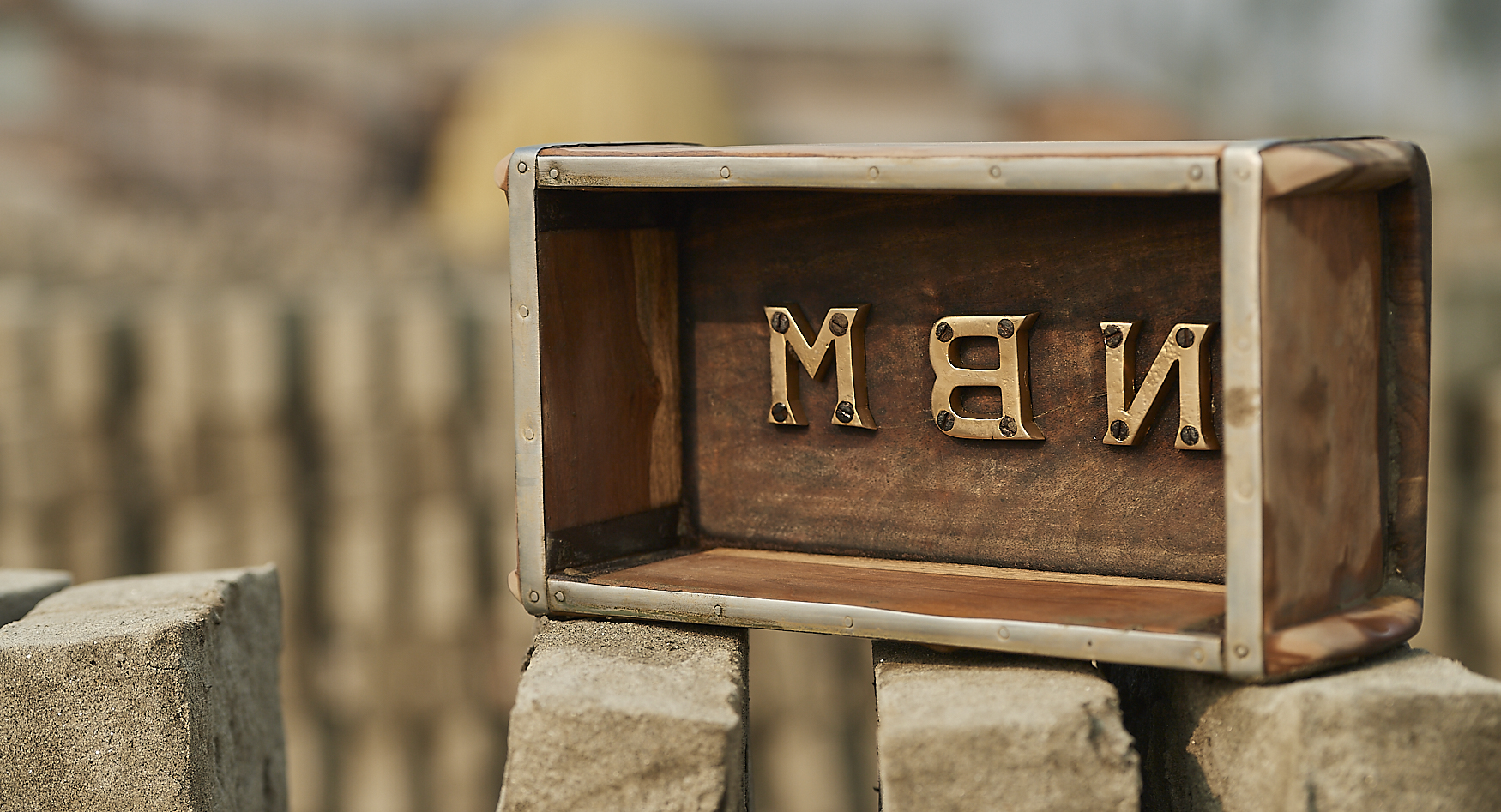


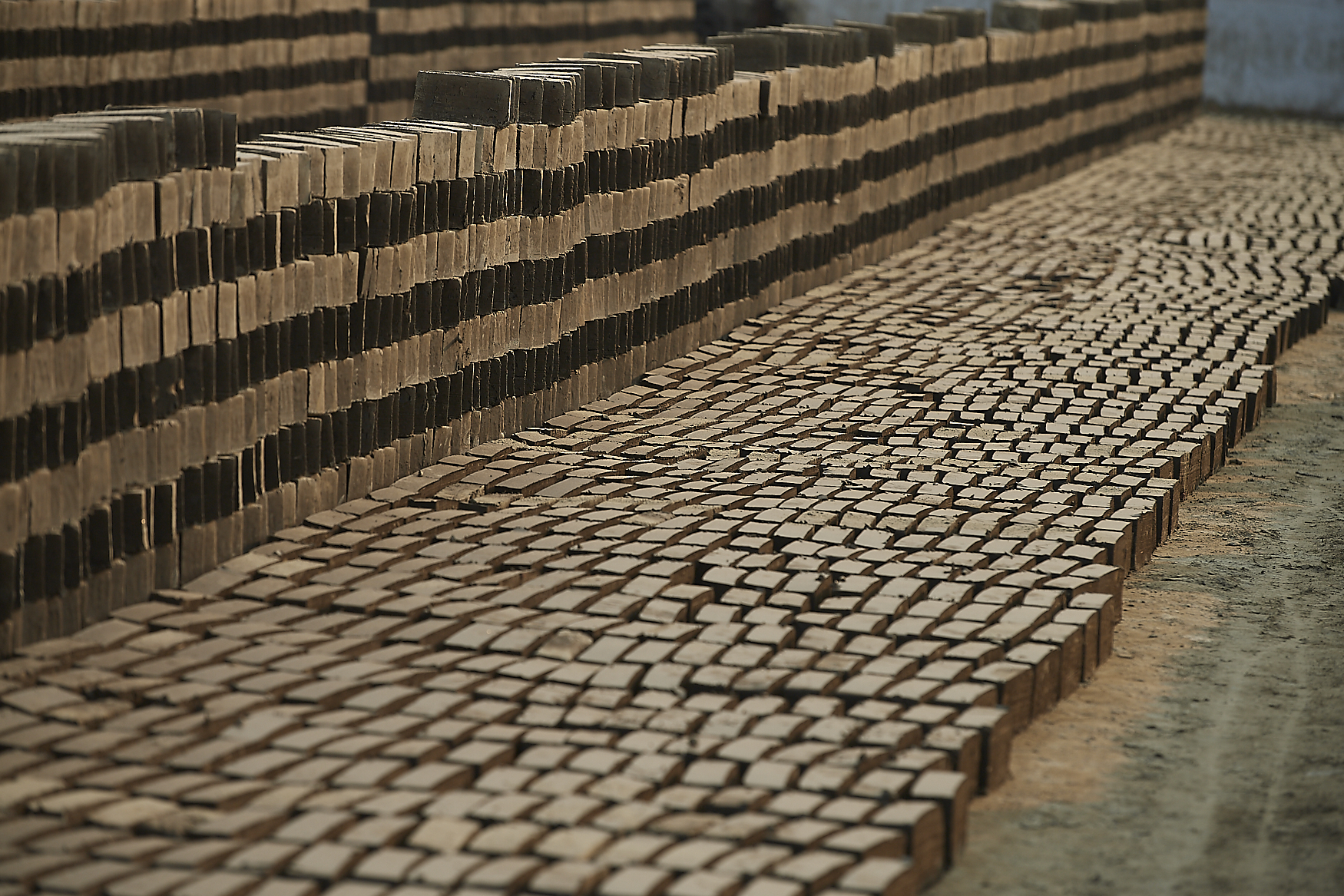
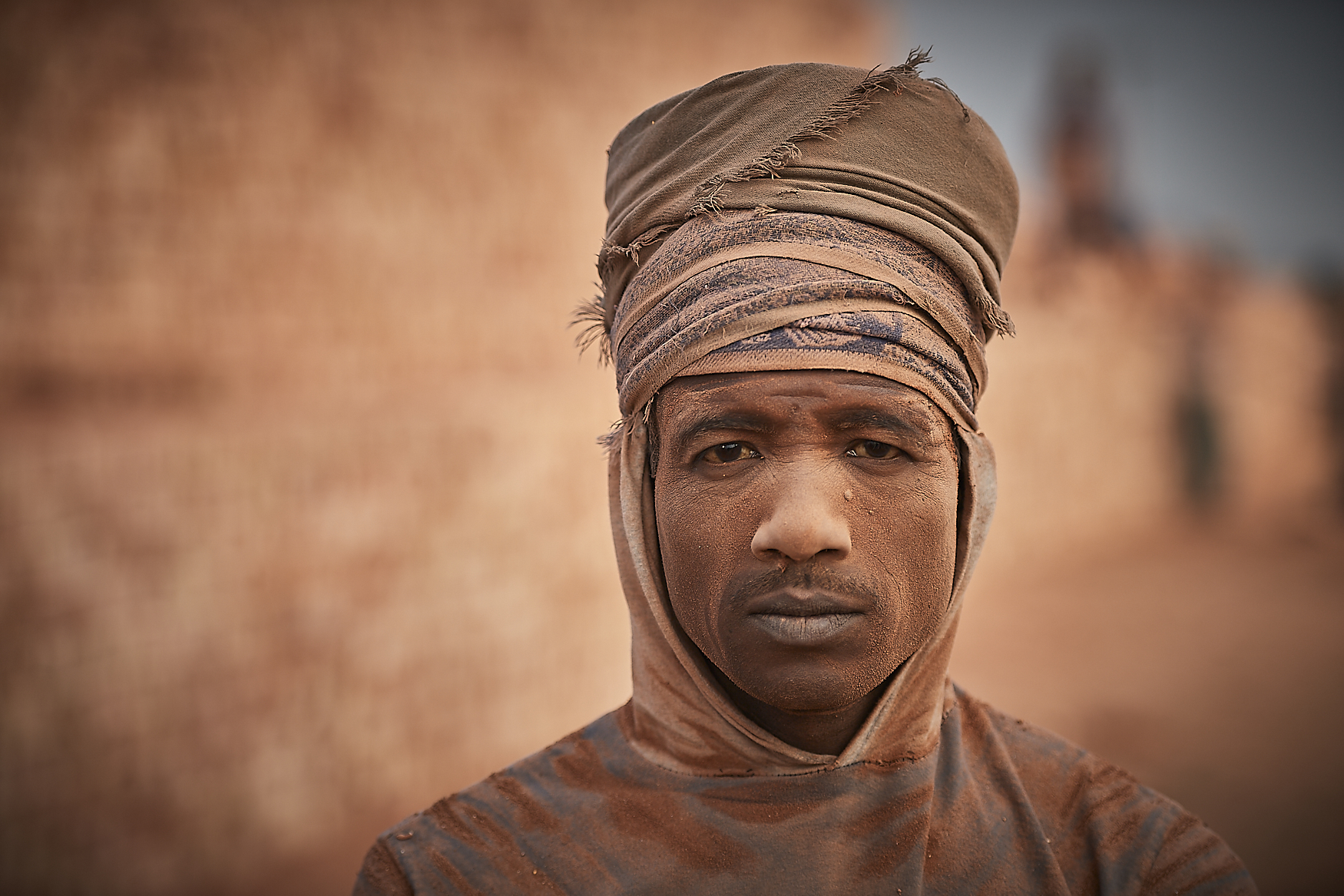
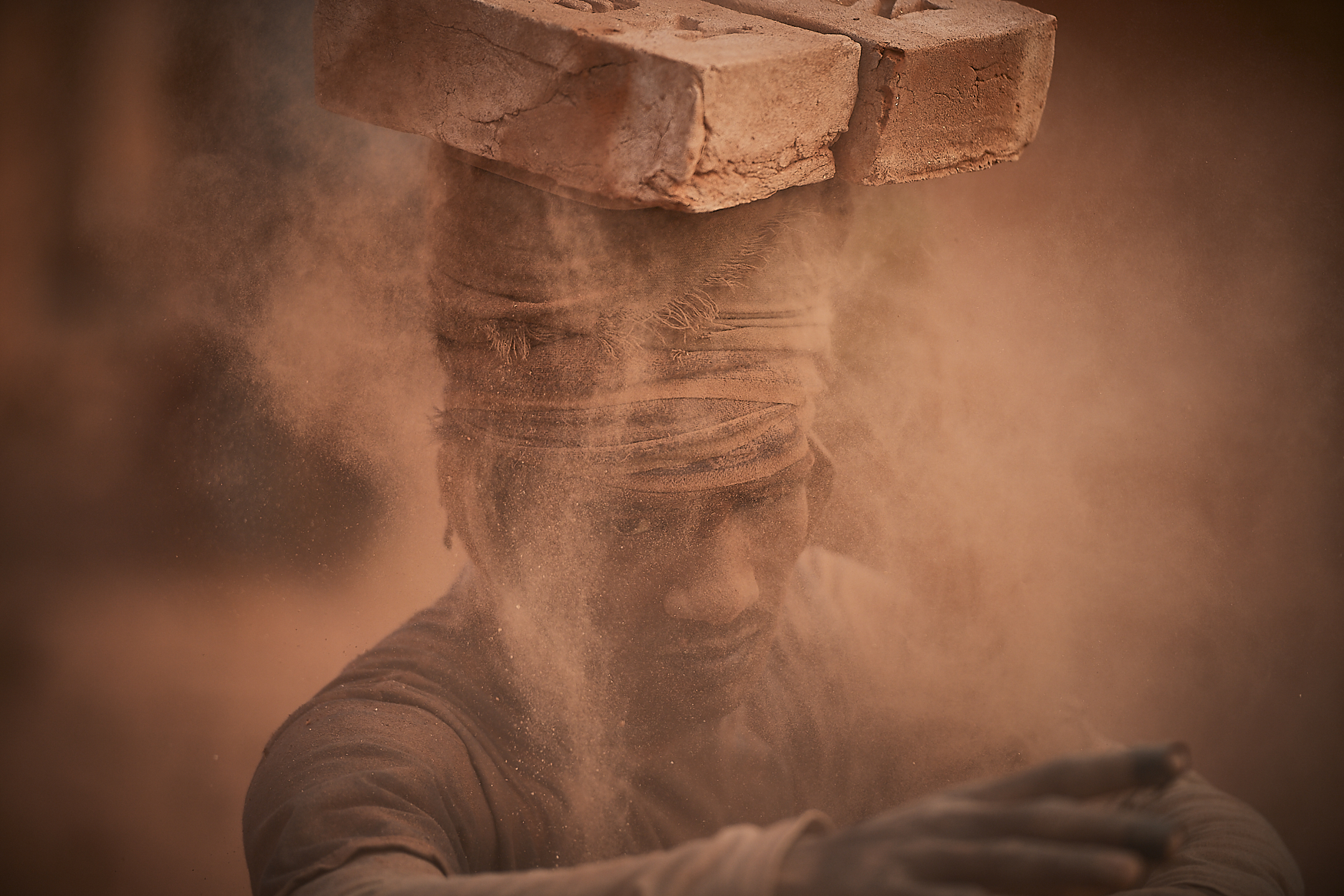
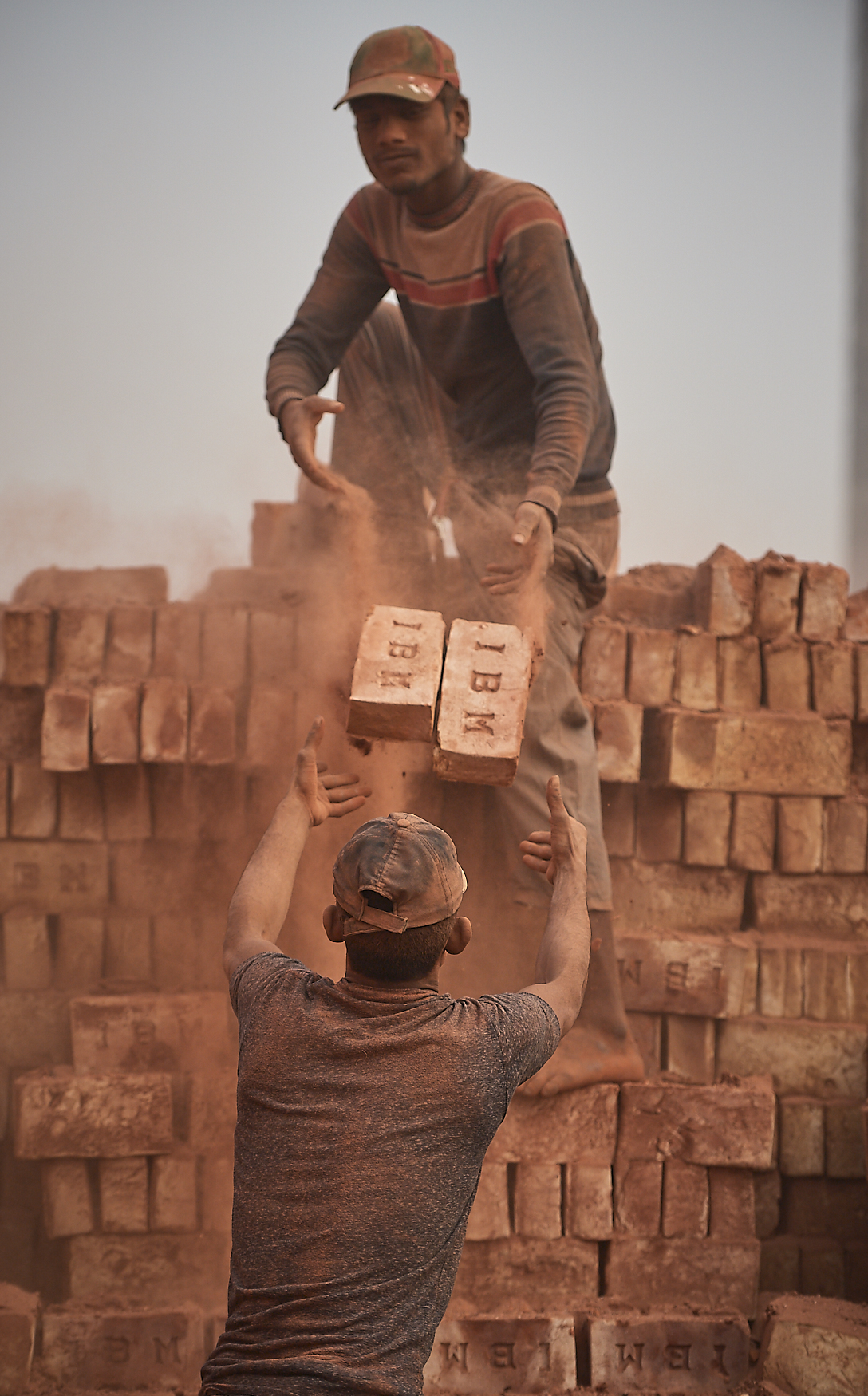
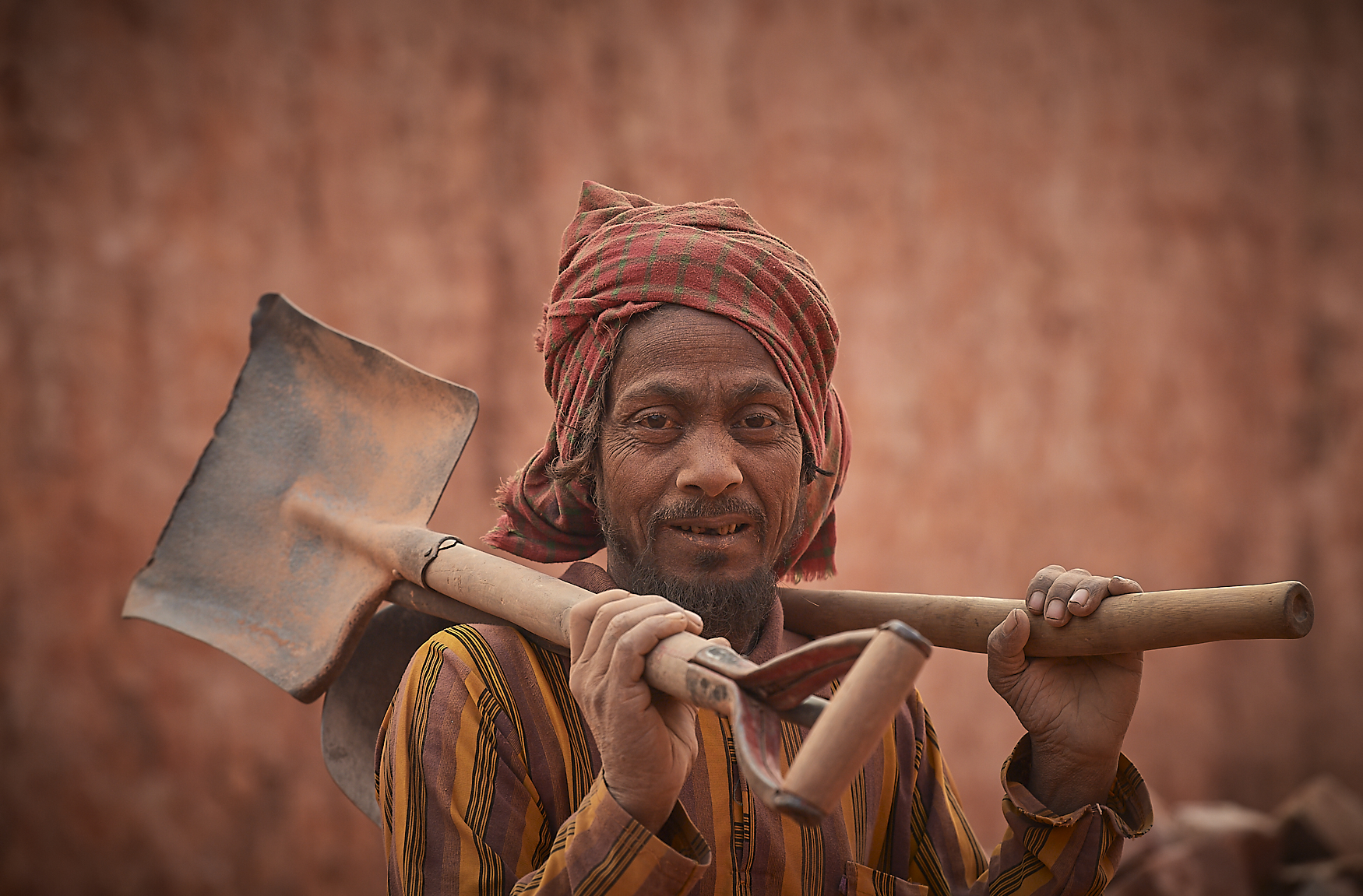

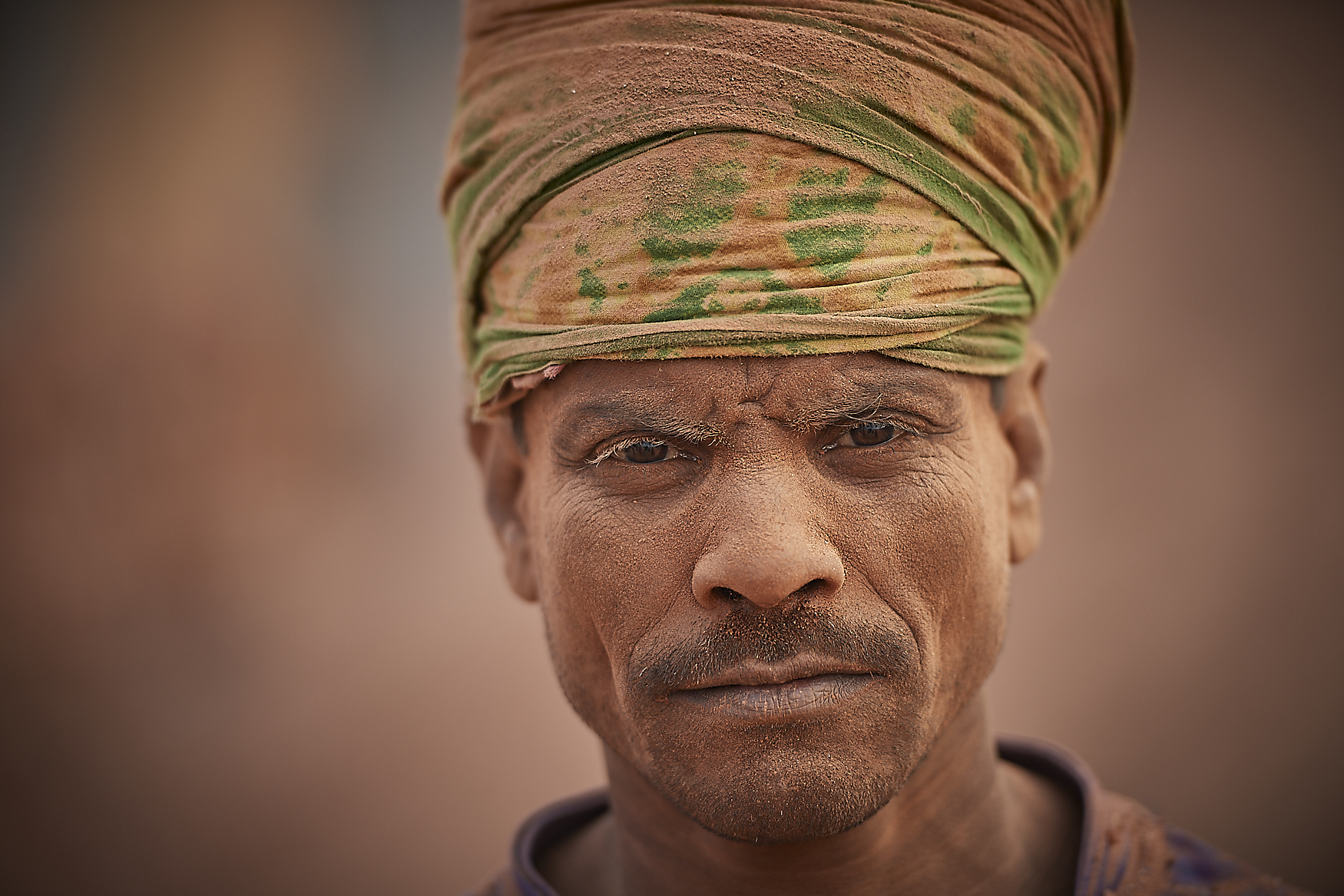
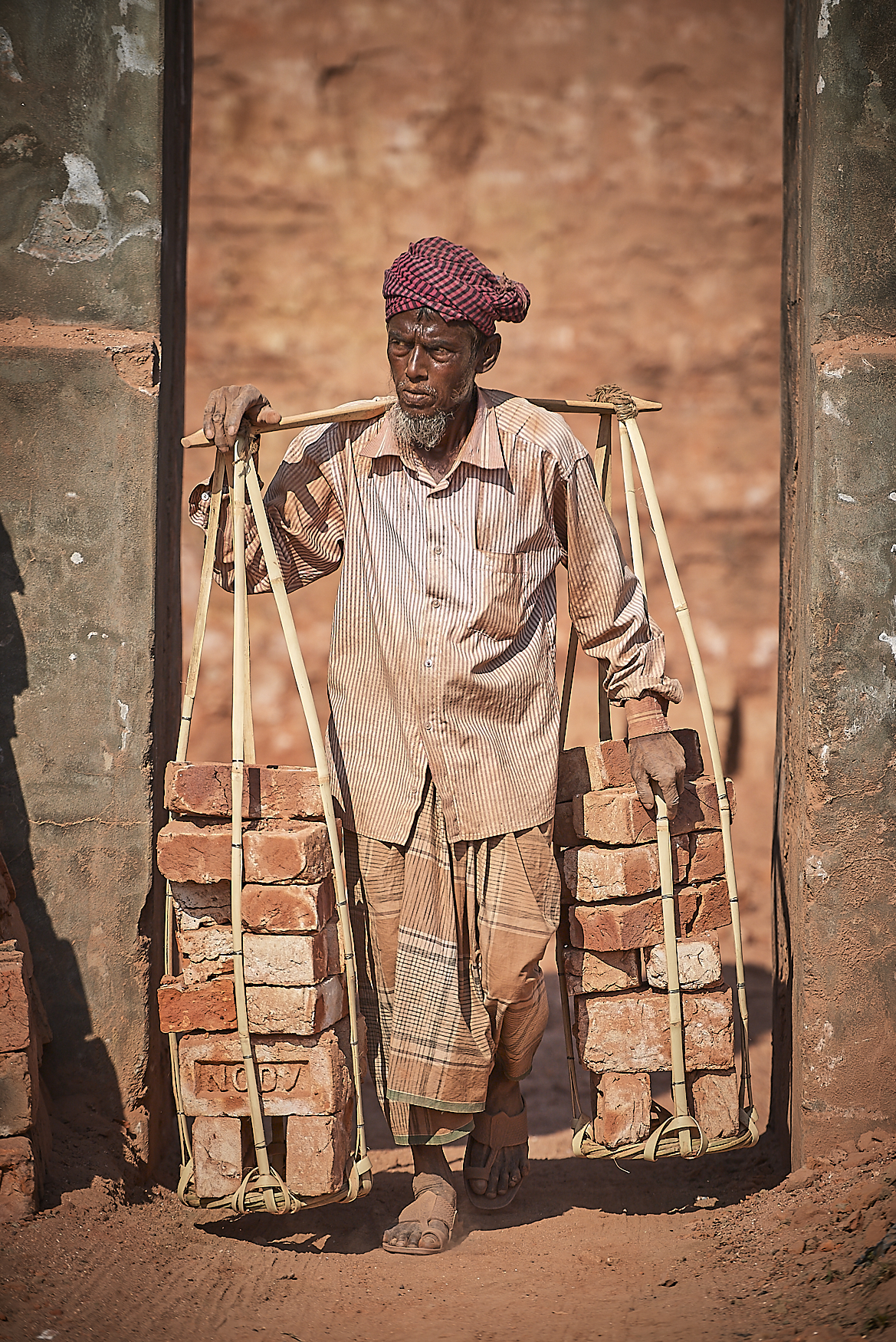

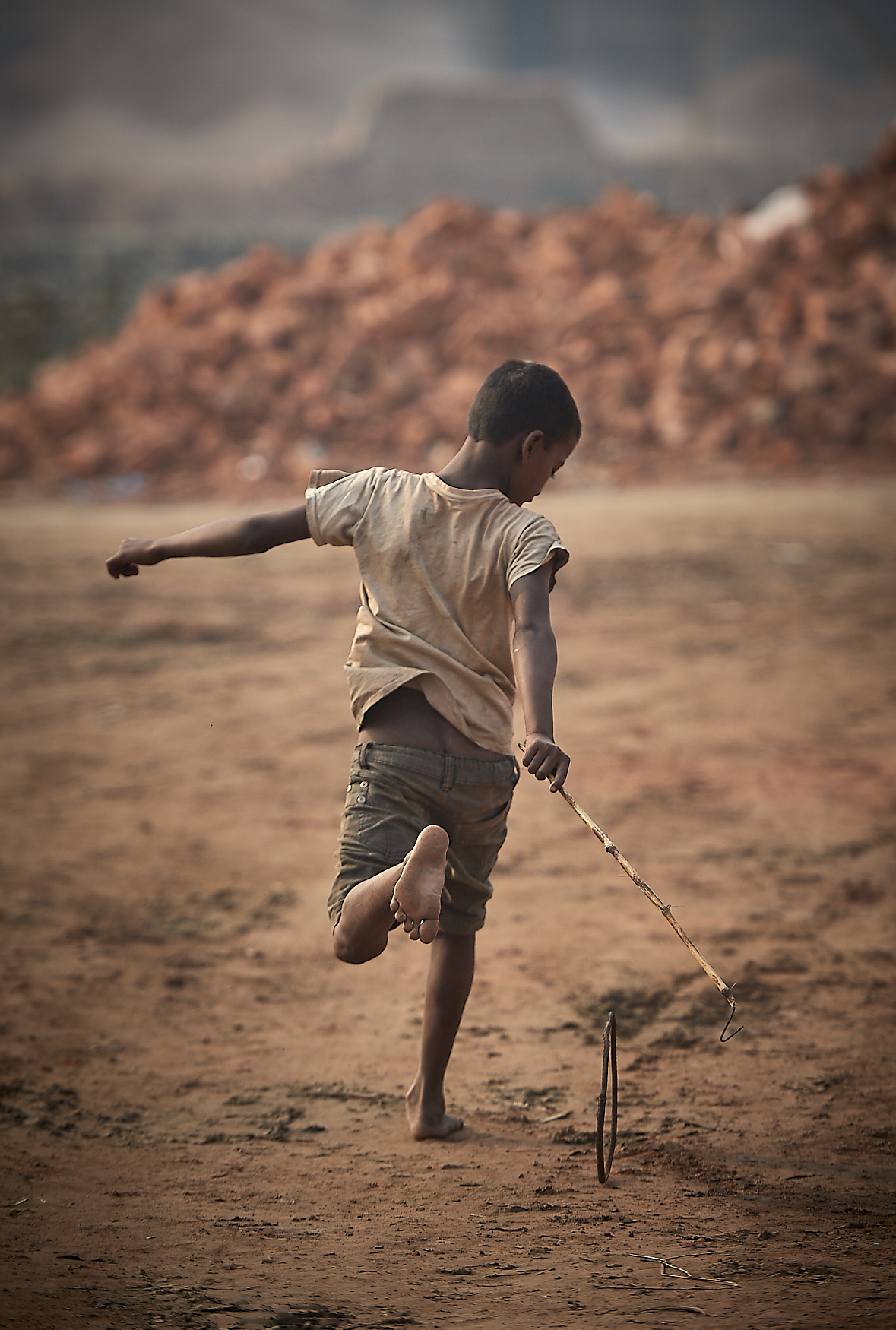
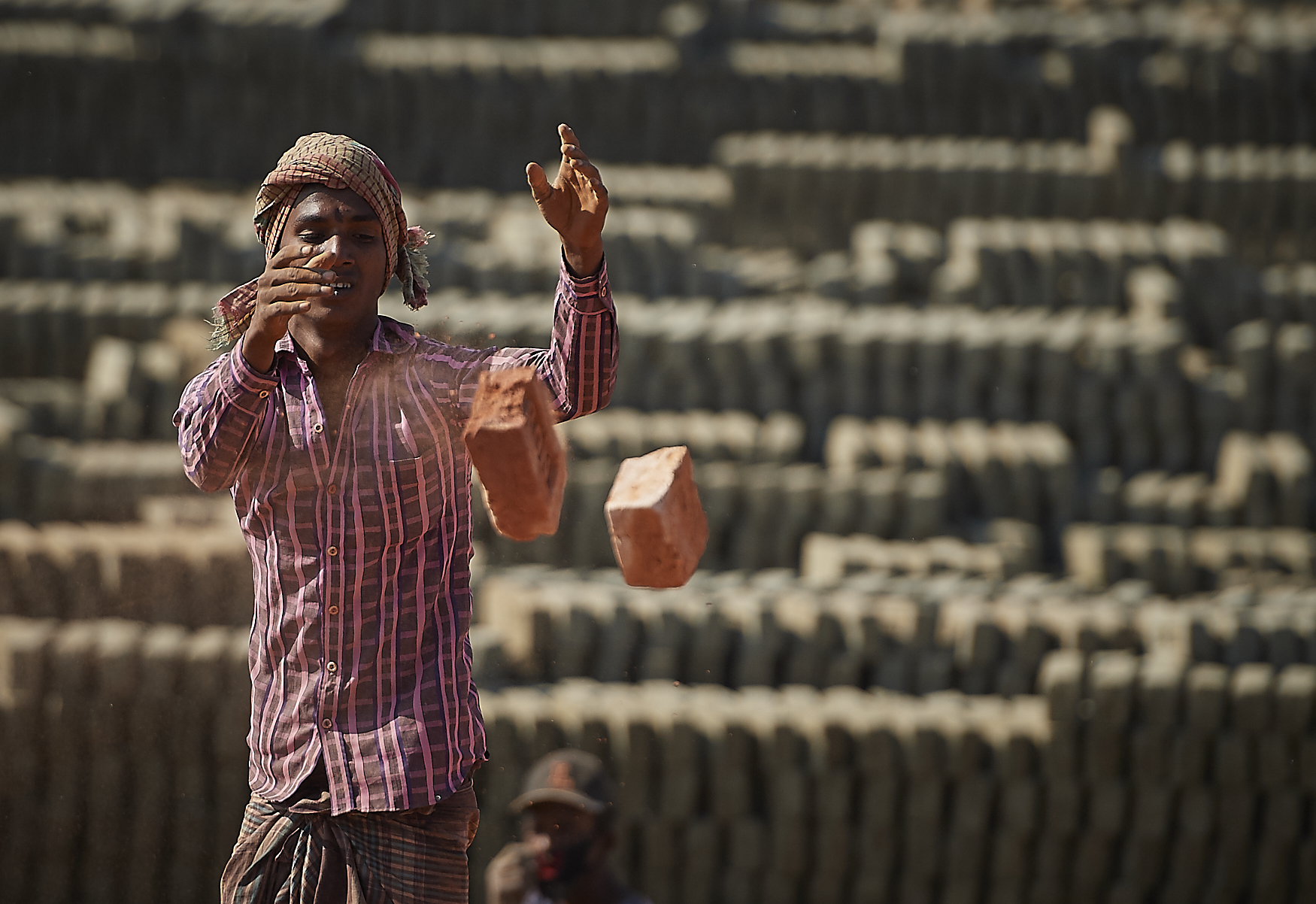
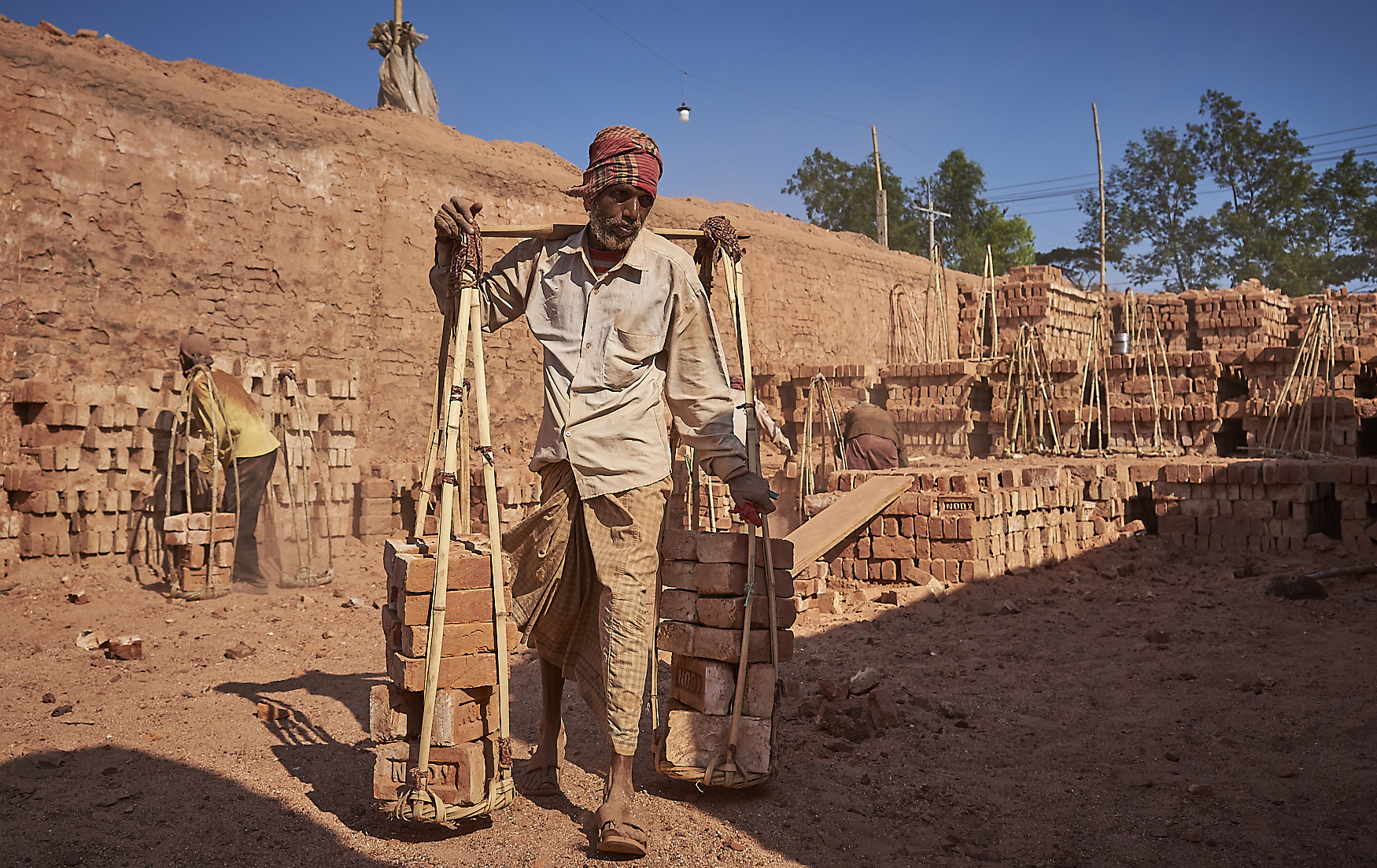

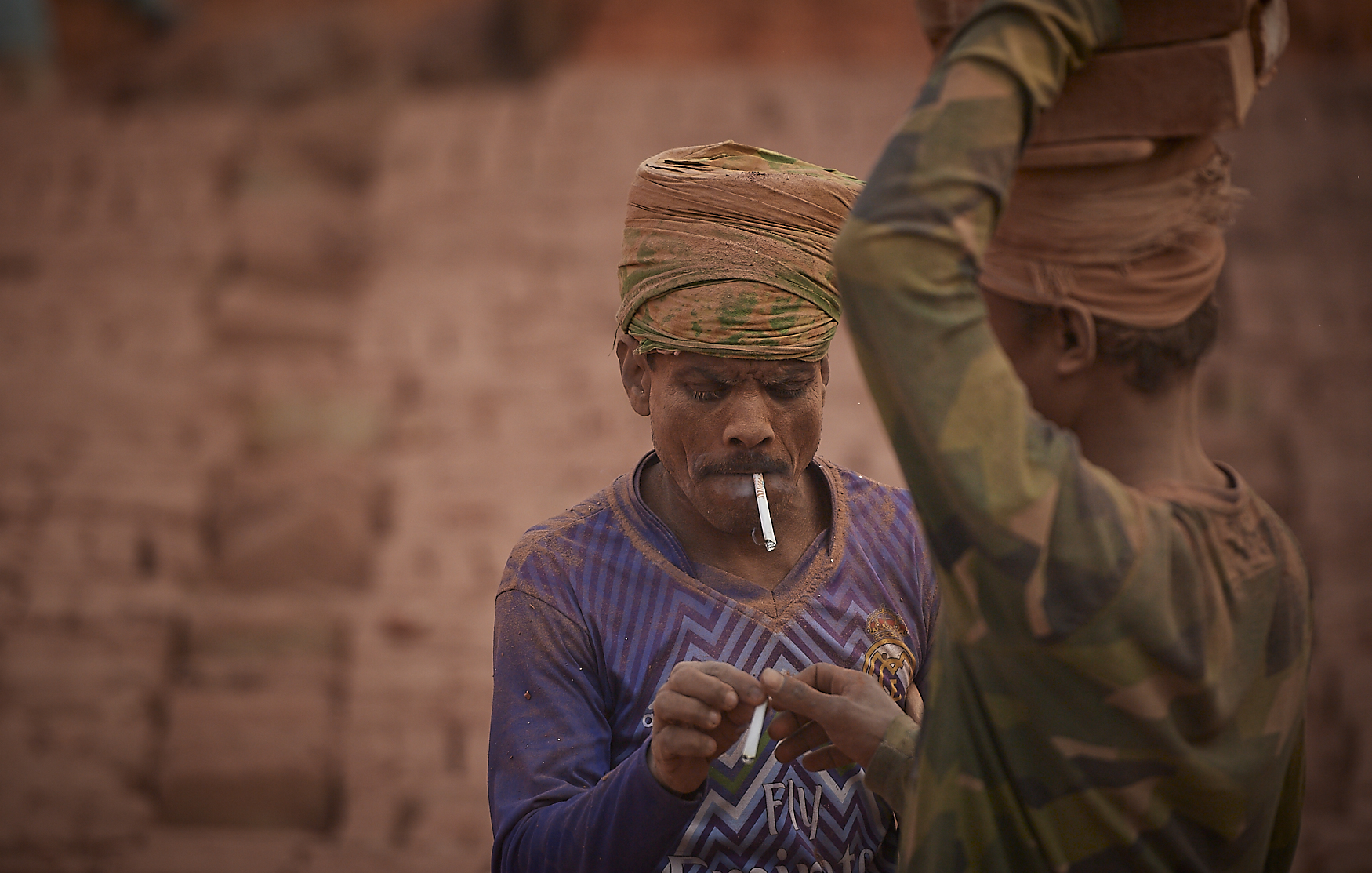

It’s an amazing experience. It leaves you almost equally covered in brick dust, your cameras are equally caked in almost every nook and cranny and there may even be dust in parts which actually never see the outside air (think underpants or worse) and if you’ve made the mistake of breathing too deep, you’ll be coughing for a little while and have a chalky taste in your mouth and yet, your eyes are filled with images unlike anything you’ve seen before. Coming out of the cloud you’ll never be the same again - well, I definitely wasn’t and never will be. As I sit here writing this story and looking at the images which will accompany it, I only want to be back there, in the midst of it all. The magic of time travel I experienced at those few minutes (my guide later told me I spent over 45’ there, but to me, it seems like the blink of an eye!) is, if nothing else, a promise my heart made that I would return there as soon as I can!
I’d like to come back to something I said right at the beginning: that both the government and the tourism operators in Bangladesh and abroad are wrong to not include the brick factories in their itineraries. I understand why they do it - they have, after all, experience from idiotic, self-serving, western journalists presenting things and situations they don’t like, they don’t understand and they are unilaterally critical of based on their own standards. it happened once with the Chittagong ship-breaking yards, causing massive global condemnation, outcry by people who had never been within 2,000 miles of the shipyards, causing the government to react and close off all access to the shipyards to foreigners and the introduction of an unhealthy amount of fear and scepticism towards journalists by, well, almost everyone. So yes, I get why they don’t advertise and, mostly, I don’t blame them. But they should share this with the world. It is, for lack of a better term, one of those rare experiences of the past and it is beautiful - not for the process itself but because of the wonderful people the Bangladeshis are! They deserve for their world to be known because, difficult as it may be, it is also amazingly human and they make it an unforgettable experience!
Oh, and few notes for the photographers among you:
- be prepared to be completely covered in coarse dust, be that coal or brick, most of the time you’ll be walking and shooting in the factory. It’s the way things are and you should go in prepared. Do not count on changing lenses anywhere there - more than one body IS the way to go there.
- be careful where you step. Stacked bricks are nowhere near as stable as their name suggest, so look first, step second, shoot third. Change the order and you will fall, expensive camera and all.
- never, ever, refuse to show a worker their portrait or shot. If they don’t ask, it’s okay, but I found that showing them a nice shot of them ALWAYS resulting in them accepting me more into their group and giving me more access.
- you are free to shoot without permission, but when you see someone looking at you, always do. They will never refuse (at least they never refused me) and it helps you build a more equanimous rapport with them. It also makes your shots more alive and more interactive
- before you leave, take a breather and clean your camera a bit BEFORE you put it back in your camera bag. I recommend using a brush (like a paintbrush or something) to remove the dust from outside the body and lens. The good news is that because the dust is very coarse, it does not stick to the camera plastics or get into the nooks and crannies, so you should be able to remove most of it very quickly and effectively.

